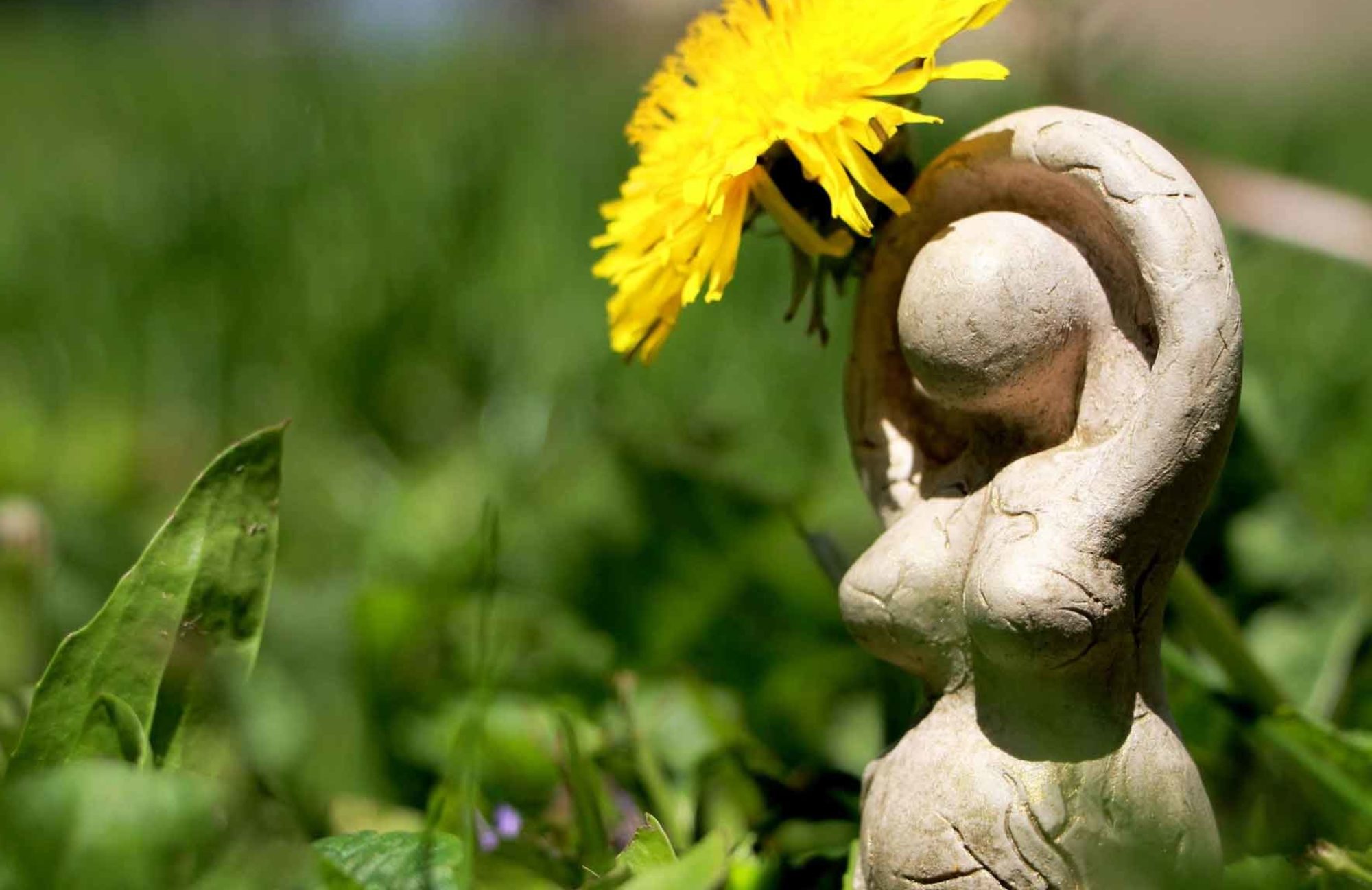by Dr. Miranda Shaw, keynote presenter
What an amazing organization and conference series ASWM has created. I experienced the weekend by presenting as well as attending panels and performances.
My talk began with an exploration of how Buddhist women in Nepal embody Vasundhara, earth mother and goddess of abundance and wisdom. I showed slides of rituals that invoke their identity with the golden goddess. I could see that both the words and images were going deep. The women present were also enchanted by the Kumari tradition, in which young girls embody the female Buddha Vajrayogini. Talk about a receptive audience! Beyond receptive—hungering and thirsting for knowledge of goddesses and women’s religion.
My mother Merry Norris spoke and showed slides in the next panel. She not only showed her own mandala and goddess paintings, but those of her students, many of whom had never picked up a paintbrush before, commenting on the healing and transformations that were associated with various artworks, as women went through a particular challenge or life transition.

The images are so obviously empowered and empowering. Many archetypal goddess images come through, even when women have had no direct exposure, and that was apparent in the slides. One of her central themes was a difference she sees between ‘recovery’ and ‘transformation.’
The discussion afterward was great: how do we draw on goddess imagery and stories to transform our consciousness and lives. One woman raised a concern about a tendency she sees—not in the speakers but more broadly in our culture—for women/feminists to turn the spiritual growth process into a kind of self-help therapy. Entirely focused on self-improvement, this becomes another, albeit subtler, form of disempowerment, of never being good enough, never ‘arriving.’
The next panel I attended was on creativity, where Leesa Sklovar-Filgate talked about her work that combines psychotherapy, music therapy, and working with the Cetacean Society to find and save ‘lone’ whales that have become separated from their pods. Leesa played some songs that she wrote ‘with’ whale songs, communing with the whale song and responding to that.
The discussion following focused on how we find our sources of power and how we gain access to inner wisdom—not only our personal truth but the deeper currents of reality and the voices of the women of the past and the spirit of other species on the planet. This brought up the broader question of how we connect with the subjects we would understand, whether it be the past, other cultures in the present, or other species.
Answers to this question began with the role of art in our culture—how we need new/old myths and images for our time, and how we create an environment, in our respective spheres of work, for the sacred feminine to emerge. We also touched on how we navigate our feminist and goddess work amid the institutions that are not oriented to welcome and support it. We didn’t get to explore this at much length, but it seemed a potentially fruitful topic for consideration at another time.
The performance program on Saturday night was wonderful: Shelley Graff guiding us in singing, followed by Tova Beck-Friedman’s intense, short film Medusa’s Head and SheWho’s renditions of both sacred and lighthearted songs.

Layne Redmond gave an amazing slide-show and talk on frame drums. She shed light on some motifs in the artistic record that I had never noticed, and on their meanings and thematic connections, that was really eye-opening, especially since she drew in Indian materials (iconography, themes) and made me see them in a new light. And she explained some motifs in Neolithic and Greco-Roman art that I have never understood. It is hard for me to grasp the amount of material she has amassed and the profound connections among them she has drawn. She truly deserved/deserves the Brigit Award for Excellence in the Arts.

Another conference highlight was Serpentessa. Her dance with her ‘serpents’ on Saturday night was truly profound and sacred. How wonderful to see a woman moving in intimate communion with snakes. So much ancient art came alive before my eyes! In her workshop, 15 women had communion time with her wondrous snakes. I am familiar with snake iconography around the world, the pervasiveness of snake imagery in association with priestesses and goddesses, and layers of symbolic resonance in that. But what was missing for me was any sense of what that might be experientially. Serpentessa is so beautifully attuned to her snakes and very skilled at creating ritual space. A huge, huge portion of the historical record came into direct experiential bodily focus for me through that experience.
The wonderful thing about ASWM is, there will be more! I will definitely make it to future conferences whenever possible.


I just stumbled upon your organization and conference – and am thrilled! Hopefully these conferences will be a yearly event because now that I know of your work, I would love to be there and share my work as well.
I have been working for several years on a book that will be released this July: “Goddess on Earth: Portraits of the Divine Feminine”. There is a wonderful portrait of Serpentessa in the book as well as other women in our growing community. Please put me on your email list. Thxs! lisa
Hi Lisa,
Thank you for your kind words. The Philadelphia symposium–and the more recent one in Madison WI–generated a lot of energy and provided opportunities for collaboration. Our schedule is set to have a national conference on even-numbered years (2012 in California) and regional symposia in odd-numbered years. This year we were in East and Midwest, and 2013 will see us in places yet to be announced.